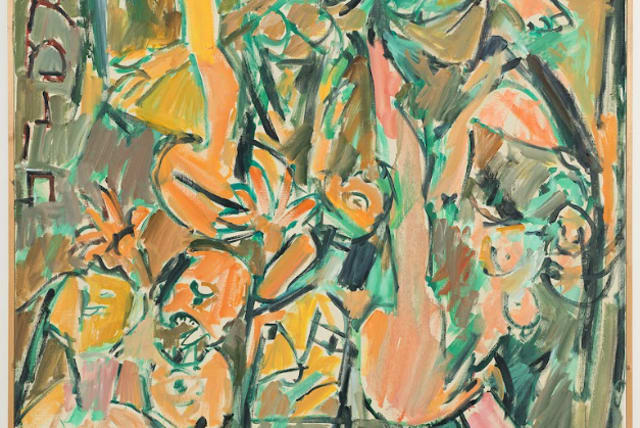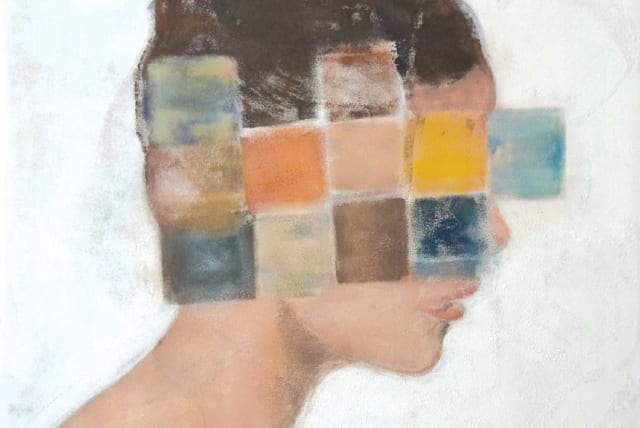For centuries, people the world over have created complex patterns using only beads and thread, thereby transforming them into intricate articles or embellishments primarily to adorn the body. Beaded articles have played an important role in daily life and ceremonial celebration and have honored concepts and traditions around the world. Throughout history, beads have functioned as currency, they possessed power and indicated wealth, they were spiritual talismans, and they have been used to form coded messages.
The beading hobbyist who views beading as a pastime may replicate preexisting designs of others, but it takes the rare talent of a true artist to elevate bead work to a veritable work of art. Ilana Joselowitz is just such an artist.
Born in Zimbabwe and a longtime resident of Ra’anana, Joselowitz worked as a fashion and textile designer in South Africa before making aliyah in 1983. In Israel, she continued her career in the textile and garment industry as a fashion designer and consultant, evaluating and predicting fashion trends for manufacturers in Israel, as well as for international brands. She has taught fashion design at various institutions of higher education in Israel and held the position of senior lecturer at Shenkar College of Engineering and Design.
Throughout her long career as a designer, Joselowitz traveled extensively, using her free time to fuel her love of the arts. As she tells it, during her business trips abroad, she always tried to build in an extra few hours so as to reward herself with a visit to a museum, art gallery, flea market, or bazaar; these visits provided her with endless inspiration. Almost from the start, Joselowitz’s fashion-centric trips abroad included shopping for beads and, she admits, she was at her happiest when she returned home triumphant with a new addition to her ever-growing collection of handcrafted ethnic beads and flea-market finds.
Becoming a respected bead artist in Israel and abroad
A course in bead weaving that Joselowitz attended 20 years ago in Ra’anana unlocked a vast treasure for her, which was the beginning of her in-depth acquaintance with bead work. This led her to the realization that this artistic medium perfectly intertwines her creative talents and skills. It was then that she began to develop her hobby on a professional level, which has led her to become a respected and well-known bead artist in Israel and abroad. While still working in the fashion industry, she juggled her vocation and her avocation; however, after retiring, beading became far more than just a passing interest and much more than a mere hobby.
Joselowitz’s childhood in Zimbabwe provided her with much inspiration for her creations, thanks to the abundance of natural semi-precious gemstones, as well as the culture, crafts, and music of the African people. She continues to draw inspiration from her love of nature and her close observation of it, and from her deep connection to Jewish tradition.
In her bead work, Joselowitz embroiders or weaves the beads while incorporating them into a variety of patterns, textures, and colors to create three-dimensional objects. In her hands, the beads become a powerful means of self-expression. This is reflected in each of her creations and in the versatility, expertise, and skill she applies to the beading medium. In addition, she finds in bead work a means of communication, which expresses a “silent dialogue” among cultures, peoples, and periods of time.
Joselowitz’s work is extremely structured. She experiments with many techniques to achieve both the visual and the tactile effects that she desires. Each bead is just one element in a larger pattern, but it is the overall design that creates the impact. “The artistry and skills lie in the design, construction, and finally the very precise execution of the bead work. Often, the design and planning can take as long as the beading itself,” she says. In some cases, she adds, the bead work takes on “a life of its own,” bringing with it some unexpected and amazing results.
Initially, Joselowitz focused on creating custom-made beaded jewelry from what had grown into a large collection of beads, sourced over many years and many visits to countries far and wide. In creating these pieces – all based on original designs – she drew upon her background as a fashion designer, all the while honing her impressive beading skills. Occasionally, her designs were developed in response to requests from customers for jewelry that incorporated specific colors or motifs. Other designs were inspired by ancient historic sites. Often, though, Joselowitz would give her imagination free rein, using the beads she collected (and has continued to gather at every opportunity) and her inspired creativity to produce works of remarkable and breathtaking originality.
The artist strives to incorporate beads and gemstones from one or more countries of origin in each of her works and, with great skill, adapts the color scheme of the beads to characterize their country of origin or to the subject of the work itself. Thus, for example, beads made of blue lapis lazuli gemstones from Egypt may be incorporated into a jewelry set that is dominated by the blue of the Nile and the shades of the desert.
In another beaded necklace, she wove layers of large and small beads to create “beaded beads,” while incorporating a delicate filigree pattern in each. Ancient fossil beads can be seen in a necklace, bracelet, and earrings set inspired by the mosaics of the female figure “The Mona Lisa of Galilee,” discovered in a Roman villa at an archaeological site in Zippori.
Cloisonné beads from Nepal are skillfully combined with multi-colored glass beads from the Czech Republic and fine gold-coated discs, creating a spectacular burst of color that seems to accentuate each individual bead. In another piece, vintage silver beads from France alternate with Czech glass beads and turquoise Amazonite beads, purchased in the Old City in Jerusalem.
More recently, Joselowitz has branched away from jewelry (though never abandoning it completely) to create items with Jewish significance. “Beyond designing beaded jewelry,” she explains, “I have been focusing on creating beaded Judaica. Much of my craft centers around the beauty and meaning of objects used in Jewish ritual and the concepts that are fundamental in Jewish art.” Keeping in mind the importance of beautifying the mitzvot, she has transformed ritual objects into stunning works of art.
It is here – in the realm of Judaica – that one can see where Joselowitz’s love of art, mitzvot, and tradition fuses and combines with stunning success. Inspired by the colors of Jerusalem stone, a Seder plate was embroidered using an eclectic combination of natural gemstones and minute glass seed-beads. The six circles on the plate, which will contain each of the Seder’s symbolic foods, are embroidered to resemble matzot. A second Seder plate was inspired by the vivid colors of gemstones featured in beaded adornments in Morocco.
Antique siddurim and repoussé engraved book covers provided the inspiration for the embroidered cover of The Book of Psalms; a hand-washing vessel beaded with pearls and shells was inspired by the purifying powers of natural flowing waters which once gave life to these shells; an exquisitely detailed wooden etrog box is edged with beaded palm leaves; and dreidels in shades of blue and white are inspired by the ceramic tiles in a synagogue in Morocco. And a particularly intricate bead-embroidered Tu Bi’shvat plate was inspired by the pomegranate, which is one of the seven species with which the Land of Israel is blessed.
A beaded Purim grogger (noisemaker), oznei Haman, and a small bowl of beaded mishloach manot are inspired by the bold design and vivid colors of traditional African bead work; and a beaded hamsa is intricately embroidered on each side with a motif of a beaded fish and is accented with polished gemstones in vibrant blends of color.
It is clear that all of Ilana Joselowitz’s works of art are based on the application of the many years of knowledge and skill that she has accumulated in her profession as a fashion designer, bead artist, jeweler, and artist of Judaica, all the while maintaining precision, superb colorations, complexity of design, and a perfectly clean finish. Thanks to all of these components, her creations are exceptional in their design and beauty. ■
If you would like to view Ilana Joselowitz’s art for yourself, an exhibition of her work, titled “A BEADED JOURNEY: Ornament and Tradition,” will be displayed from September 7 to October 17 at Yad Le’Banim in Ra’anana.








































































































